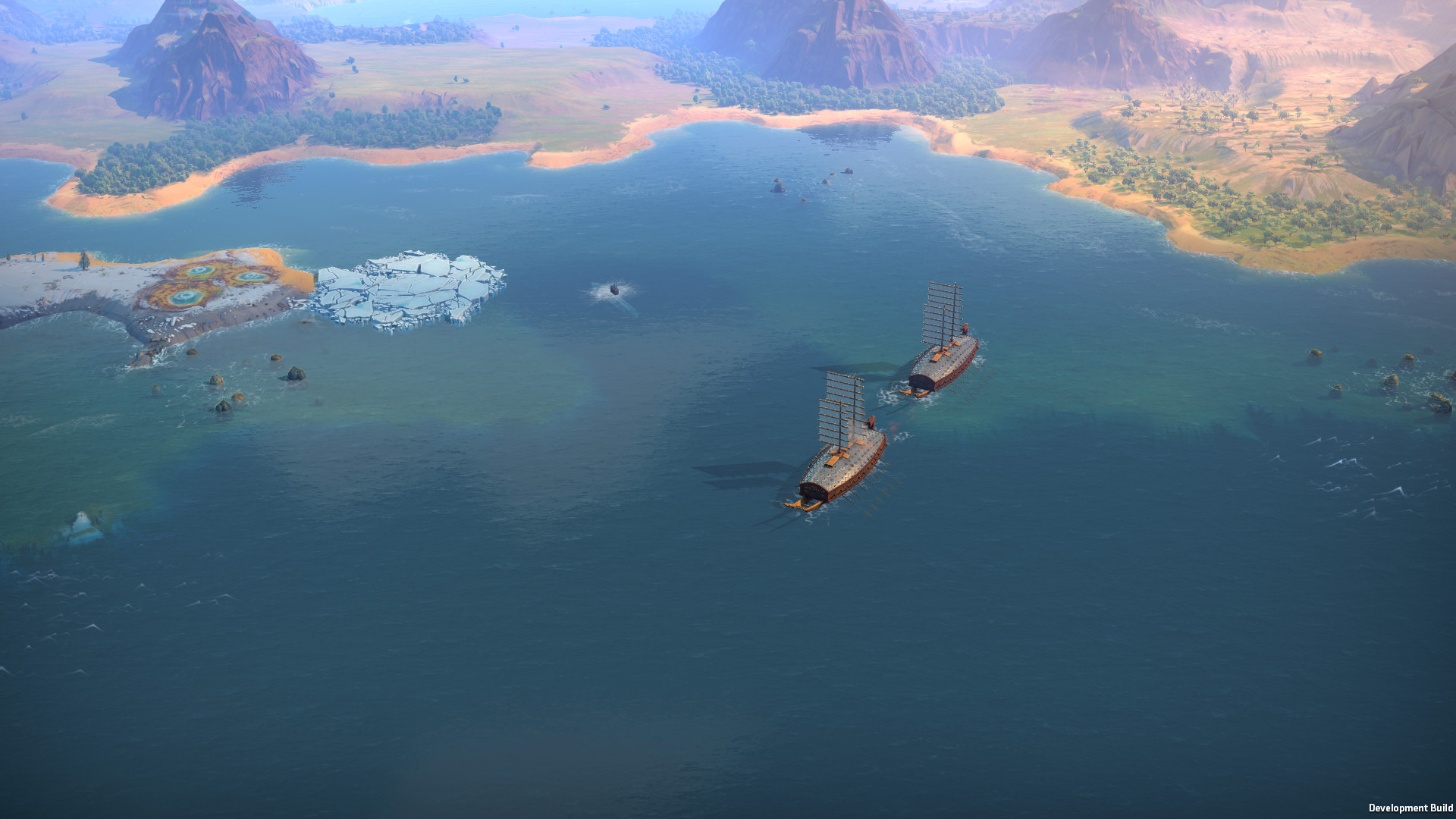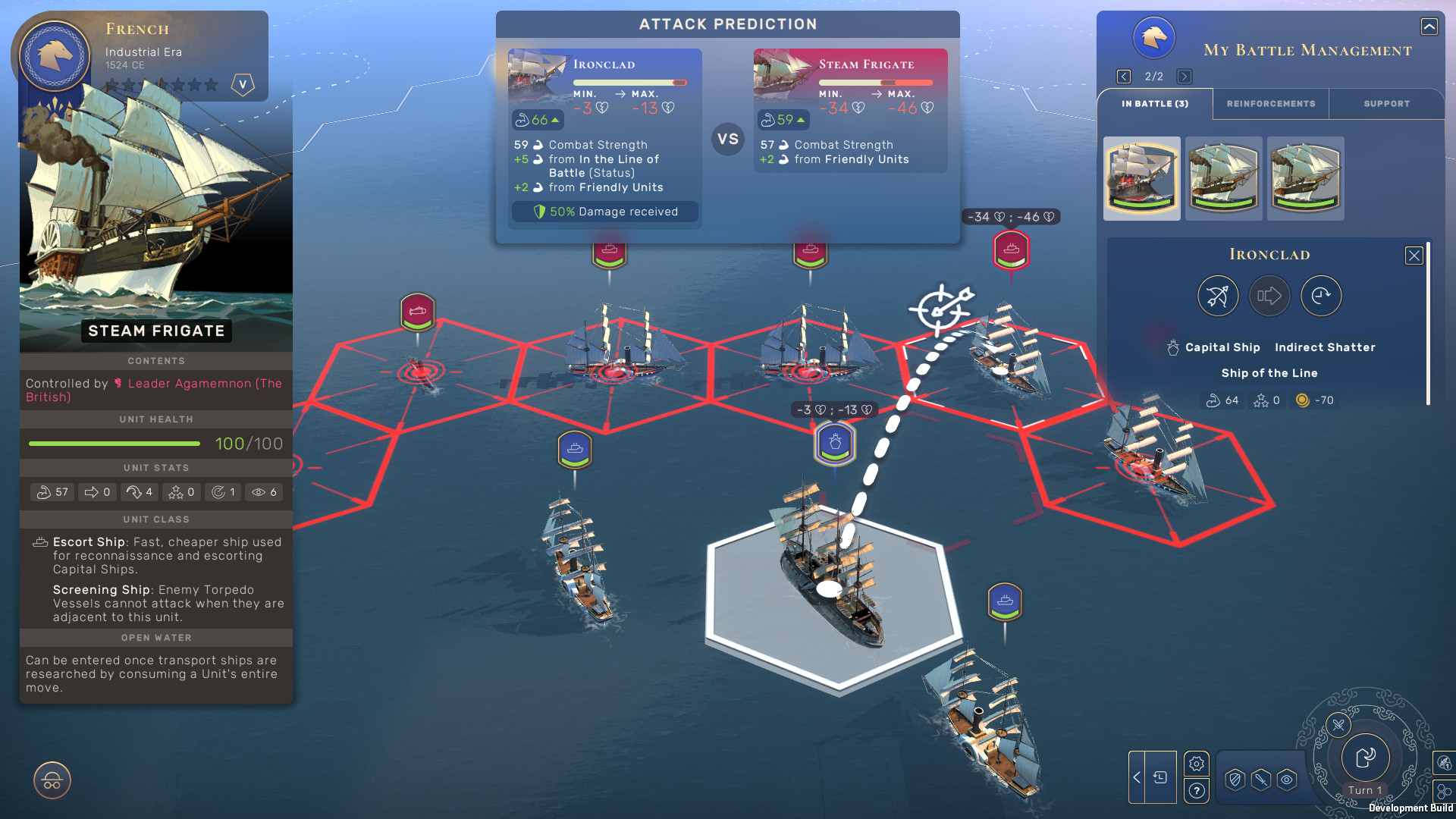For the second day of Endless Summer 2023, we’re looking at Humankind and taking it to the high seas as we dive into what the naval update will bring to the game.
While the focus of this update is on maritime gameplay, many of the changes to make control of the oceans more rewarding will also impact the land-locked parts of your empire. We are expanding the resource system to make access to resources more granular and are rebalancing luxury resources in the process. We’re also reworking the trade system to make it clearer, with fewer but more valuable and more vulnerable international trade routes, opening lucrative opportunities to disrupt your enemies’ trade through ransacking or other means.
But we will discuss those changes in the coming weeks. Today, we want to talk to you about naval combat.

Something's off here...
Naval Unit Rebalance: Harder, Better, Faster, Stronger
Many of you let us know that you found naval units too slow and weak compared to land units, especially once gunpowder entered the picture.
In the next update, we’re rebalancing the abilities and costs of naval units pretty much across the board. Most naval combat units (as well as air units for proper carrier support) will see increases to their movement speed, attack range, or combat strength. Late game capital ships in particular will deliver devastating blows to land units if they get a chance to fire on them.
Larger Battlefields: From Boarding to Bombardment
With faster speeds and longer ranges, the combat areas were starting to feel a bit cramped. We increased the size of naval battles to let you take full advantage of the new-found mobility and firepower of your navies, and stretched the deployment zones to the edges of the battlefield to begin every battle in the most favorable position. Finally, these battles will not feature a flag to capture, as a supply camp made little sense on the open seas. That does not mean all battles end in complete destruction, though, as in the second turn of a battle you may be able to call a retreat and fall back to the edges of the battlefield if you have taken heavy losses.
Ranged Retaliation: Early Modern Warfare
Faster movement, longer ranges, greater firepower... Won’t this just amplify the first move advantage in combat many of you have pointed out? You might think so, but your enemy will be shooting back now! The attacker may still have the advantage of being the first to concentrate their firepower, but they’ll take a chunk of damage in return.
New Classes and Abilities: Top of the Line
While all the changes mentioned above will help to set naval battles apart from land battles, they are merely the bones of the naval combat changes. The meat and flavor are in the changes and additions to the mid and late game naval units.
Starting in the Early Modern age, you will have access to two classes of ships, Capital Ships and Escorts. Not only are capital ships armed heavily enough to support your sieges by destroying walls, their sheer bulk means they take less damage from attacks! Most of them also have the Ship of the Line ability that gives them even higher combat strength when they’re next to two other allied units, encouraging you to form a battleline and meet your enemies with a withering hail of cannon fire.
Capital ships are, however, quite expensive. This is where the escorts come in: Cheap and fast, they are an excellent option for patrolling your trade routes so you can bring the might of your capital ships to bear where it is most needed, and to further support these behemoths in battle. With the advent of torpedo warfare, they will also help to screen your capital ships against attacks, while serving as a spotter for their massive guns on the side.

David versus Goliath
A Note on Land Battles
We know that some of these changes to naval battles would also be interesting improvements for land battles, and that a good part of our players would welcome them, so we want to be upfront with you: We may not be able to add ranged retaliation or retreat to land battles, as both features face additional technical and design challenges in land battles. However, the expanded deployment zones are shared between sea and land battles, and air squadrons stationed within the battlefield can be used during the battle for both.
That’s all for today but join us next week for a closer look at some of the economic changes.


